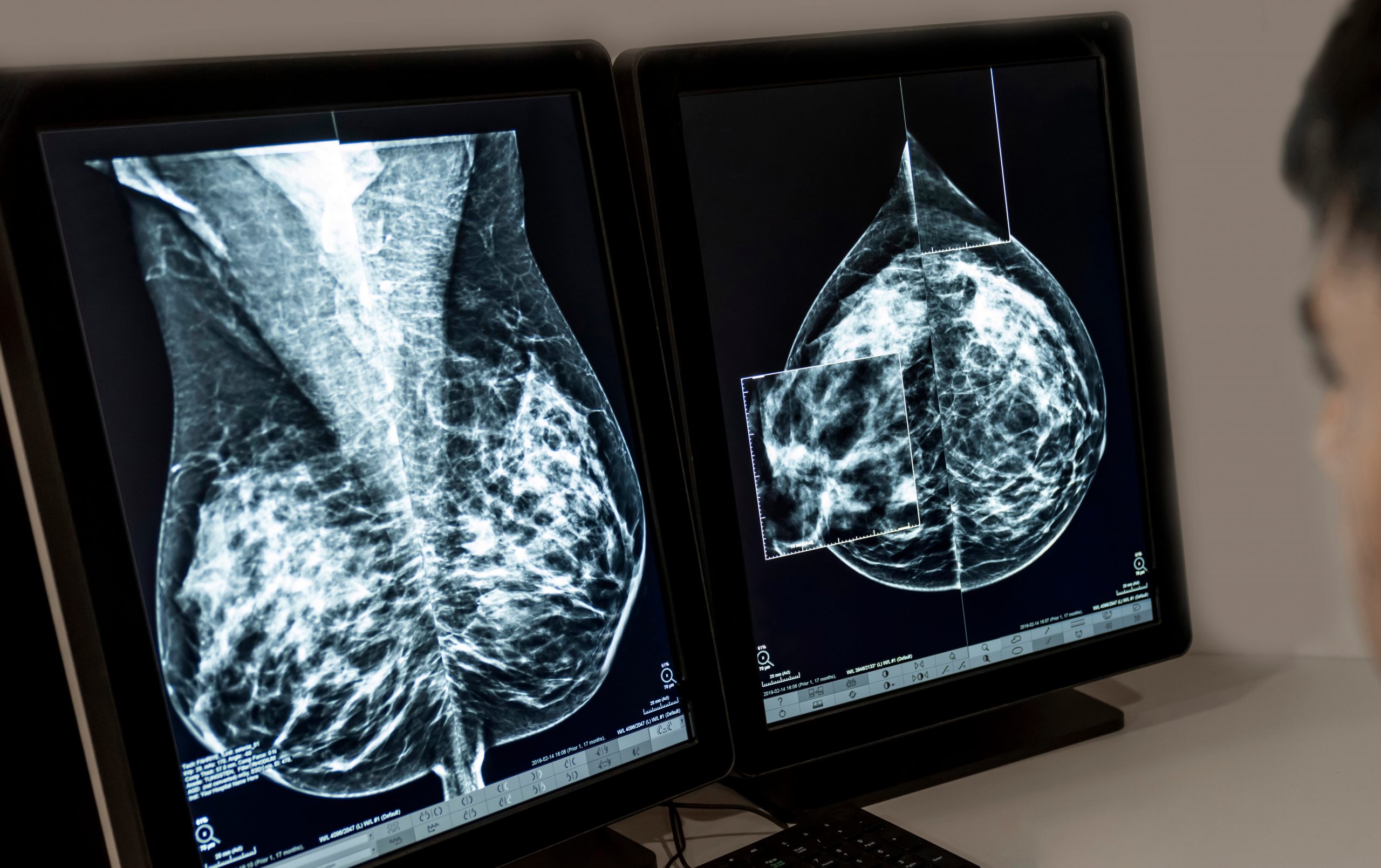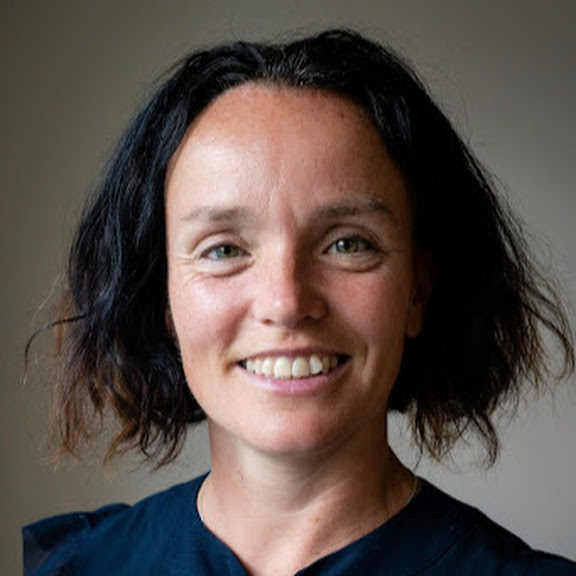Cancer
Mobile mammography unit to address gaps in access to care

A new US collaboration will see the launch of a mobile mammography unit that aims to address gaps in access to care.
Part of a larger mobile clinic, a converted RV equipped with a mammography unit aims to encourage improved uptake of regular screenings for people who would normally have to travel for their screenings.
The unit has been launched by Blue Plus, the health maintenance organisation (HMO) affiliate of Blue Cross and Blue Shield of Minnesota (Blue Cross), and Odam Medical Group.
The mobile clinic has been bringing the same services offered in a primary care clinic to homes in 16 Central Minnesota counties since 2022.
“We know access to reliable transportation is a major barrier to care, especially in rural areas of the state and among immigrant populations,” said Chris Reiten, vice president of Medicaid at Blue Cross.
“The feedback from patients who have received care from the Mobile Clinic is incredibly positive, so we are thrilled to build on our relationship with Odam Medical Group to increase access to important preventive care services and meet even more Minnesotans where they are.”
“Early detection for breast cancer can vastly improve health outcomes,” said Dr. Robert Larbi-Odam, founder of Odam Medical Group.
“Adding mammograms to our services will make it easier for patients to get their recommended screenings, especially in counties where they would otherwise need to travel long distances for an appointment.”
News
Few women in low- and middle-income countries receive early cancer diagnosis

Just one in five women with breast or cervical cancer in low- and middle-income countries are diagnosed early, compared with more than one in three in wealthier nations.
The analysis of data from more than 275,000 women across 39 countries shows stark inequalities in cancer detection and treatment between high-income countries (HICs) and low- and middle-income countries (LMICs).
For ovarian cancer, early-stage diagnosis rates remained below 20 per cent worldwide, with women in LMICs faring slightly worse overall.
The study, led by the Cancer Survival Group at the London School of Hygiene & Tropical Medicine as part of the VENUSCANCER project, examined breast, cervical and ovarian cancers diagnosed between 2015 and 2018.
Early detection for breast and cervical cancers reached 40 per cent or higher in HICs but dropped below 20 per cent in most LMICs, except in Cuba (30 per cent for breast) and Russia (36 per cent for cervix and 27 per cent for ovary).
Metastatic breast cancer – where the disease spreads from its original site – made up less than 10 per cent of cases in most HICs but ranged from 2 to 44 per cent in LMICs.
Ovarian cancer was mostly detected at advanced stages globally. Often called the “silent killer”, it can cause vague symptoms such as abdominal pain or bloating, meaning it often goes unnoticed for long periods.
Treatment patterns also varied widely. Surgery was offered to 78 per cent of women in HICs compared with 56 per cent in LMICs. Initial treatment for early-stage tumours was more likely to follow clinical guidelines for cervical and ovarian cancers than for breast cancer.
Across most European countries, women with early-stage breast cancer received breast-conserving surgery plus radiotherapy in 67 to 78 per cent of cases. Rates were lower in Canada (60 per cent) and the US (53 per cent). In LMICs, between 30 and 70 per cent of women with early-stage breast cancer underwent mastectomy – full breast removal – though this procedure was also common in Canada, the US, Estonia, the Netherlands and Portugal.
Researchers say the high mastectomy rates in LMICs are mainly due to a lack of radiotherapy facilities and surgeons trained in breast-conserving techniques. Other factors include personal choice and systemic barriers, such as beliefs among some older women in Thailand that mastectomy offers better cure rates, and US insurance policies that may not cover radiotherapy.
Older women were less likely to receive treatment in line with clinical guidelines than younger women across all three cancer types in both HICs and LMICs. In most LMICs, patients also faced longer waits for surgery after diagnosis.
“This study was a major undertaking, creating the largest and most detailed global population-based database for three of the most common cancers in women to date, including data on stage, staging procedures, treatment and biomarkers,” said Professor Claudia Allemani, professor of global public health at LSHTM and lead author.
“VENUSCANCER offers the first real-world picture of care patterns and consistency with clinical guidelines on a global scale. Treatment that aligns with international standards still varies widely, but it’s encouraging that when women are diagnosed early, prompt access to optimal care has improved in most countries. The challenge remains that far too few women are diagnosed early enough, particularly in low- and middle-income countries.”
Professor Allemani called for continued global efforts to strengthen early detection and ensure access to full treatment options, including more radiotherapy facilities and specially trained cancer surgeons in LMICs.
“Evidence from this study should help to inform global policy on cancer control, such as WHO’s Global Breast Cancer Initiative and the Cervical Cancer Elimination Initiative,” she added.
Dr Veronica Di Carlo, research fellow in the Cancer Survival Group at LSHTM and co-author, said: “We found there was variation in how countries followed international clinical guidelines.
“This suggests more work is needed to adapt recommendations to local realities, simplify them, and ensure they are available in local languages.
“Women everywhere should be able to discuss treatment choices with their doctors knowing that they can access the best available care in line with recommended standards.”
The research was funded through a European Research Council Consolidator Grant.
Wellness
Protective immune cells in breastfeeding women guard against breast cancer, research finds

Women who breastfeed develop protective immune cells that help guard against breast cancer, with effects lasting for more than 30 years, new research shows.
The study found that specialised T-cells — immune cells that fight disease — remain in breast tissue long after pregnancy and provide lasting protection, particularly against triple-negative breast cancer, one of the most aggressive forms.
Observations dating back to the 18th century, when physicians noticed nuns had some of the highest rates of breast cancer, first hinted that childbearing and breastfeeding could protect against the disease.
Modern research has confirmed this link, though the biological explanation was unclear.
Professor Sherene Loi is senior author and clinician scientist at the Peter MacCallum Cancer Centre.
The researcher said: “The key take-home messages are that pregnancy and breastfeeding will leave behind long-lived protective immune cells in the breast and the body, and these cells help to reduce risk and improve defence against breast cancer, particularly triple-negative breast cancer, but potentially other cancers as well as disease.”
Researchers from the Peter MacCallum Cancer Centre in Melbourne studied non-cancerous breast tissue from more than 260 women who had undergone breast reduction or preventive surgery.
They found that women who had given birth had more specialised immune cells called CD8⁺ T-cells — part of the adaptive immune system that targets specific threats, including cancer.
The team then tested whether these cells directly provided protection.
In mice, cancer cells implanted into breast tissue grew less in those that had pups and breastfed compared with those that had not. When the researchers removed the T-cells from the nursing mice, the protective effect disappeared.
The researchers also analysed data from more than 1,000 breast cancer patients diagnosed after childbirth with available breastfeeding records.
Women who had breastfed had better outcomes from triple-negative breast cancer than those who had not. Their tumours also contained more immune cells, suggesting ongoing immune activity against the cancer.
The study provides an explanation for why breastfeeding appears protective, and the findings could help inform new strategies for women unable to have children or breastfeed.
Understanding the underlying biology may aid development of vaccines or therapies that mimic this natural defence.
Professor Loi said: “The effects are really quite small for every individual, but population-wide the effects are large.”
She stressed that breastfeeding does not guarantee protection against breast cancer, noting it is “not a 100 per cent guarantee that they won’t get breast cancer.”
The study also explored why some breast cancers contain high numbers of specialised immune cells while others do not.
Patients with more of these cells generally had better outcomes, particularly with triple-negative breast cancer.
Professor Loi explained that T-cells react not only to viruses or bacteria but also to cancer, describing this response as “one of our very modern therapeutic weapons against cancer.”
Associate Professor Wendy Ingman from the University of Adelaide’s Medical School said longer breastfeeding duration provided greater benefits.
Each year of breastfeeding is linked to a 4 per cent lifetime reduction in the mother’s breast cancer risk.
“This study shows that having babies and breastfeeding causes long-lasting changes in immune cells that could help protect the breast from cancer,” Ingman said.
“I’m hopeful that this type of research will lead to new approaches to reduce women’s breast cancer risk.”
Opinion
The rise of preventive gynaecology: What women need to know

Co-written By Dr Claire Gillvray and Tarang Majmudar, Welbeck Cambridge (2026)
Gynaecological cancers, cervical, ovarian, uterine, vaginal, and vulvar, pose a significant health risk across all age groups.
While treatment has advanced in recent years, early detection remains the single most crucial factor in improving survival, reducing the need for invasive treatments, and preserving quality of life.
Why Early Detection Matters
When gynaecological cancers are detected early, the five-year survival rate exceeds 90 per cent.
In contrast, late-stage diagnosis can reduce survival chances by more than half. Early detection truly can mean the difference between life and death.
In England, the introduction of cervical screening in 1998 and HPV vaccination in 2008 has drastically reduced the incidence and mortality associated with cervical cancer.
For endometrial cancer, postmenopausal bleeding is a red flag symptom, prompting timely medical intervention and generally resulting in early diagnosis.
Yet, ovarian and vulval cancers often go unnoticed.
Ovarian cancer’s vague symptoms such as bloating, abdominal discomfort, and appetite changes, are frequently mistaken for benign conditions.
Vulval cancer symptoms like itching or soreness are often overlooked, especially post-menopause.
To improve early detection, a threefold strategy is essential:
- Screening
- Symptom recognition
- Lifestyle modification
1. Screening
Cervical cancer is one of the few gynaecological cancers that is both preventable and detectable through routine screening.
Caused primarily by the human papillomavirus (HPV), cervical cancer rates have dropped significantly due to HPV vaccination and cervical screening programmes.
In 2023, NHS England outlined its goal to eliminate cervical cancer by 2040.
Despite high HPV vaccination coverage (approximately 80 per cent), screening uptake has declined, particularly among younger women, where participation has dropped to 70 per cent.
The upcoming introduction of self-sampling for HPV aims to address this gap and improve participation.
However, no effective population-wide screening methods currently exist for ovarian, uterine, vaginal, or vulvar cancers.
This reality reinforces the importance of self-awareness, recognising symptoms, and attending regular gynaecological check-ups.

Dr Claire Gillvray
2. Recognising Warning Symptoms
Awareness of key symptoms is vital for early diagnosis:
- Cervical cancer: abnormal vaginal bleeding, post-coital bleeding, unusual discharge
- Ovarian cancer: persistent bloating, pelvic discomfort, urinary urgency, loss of appetite, weight loss
- Uterine cancer: postmenopausal bleeding, irregular or heavy periods
- Vaginal cancer: unusual bleeding or discharge
- Vulvar cancer: itching, pain, lumps, or ulceration
Although many of these symptoms can have benign causes, persistence or change from the norm should always prompt medical review.
Historically, women’s gynaecological symptoms have often been minimised or dismissed.
This has led to diagnostic delays for conditions like endometriosis, which still takes nearly 9 years on average to diagnose.
Young women are particularly vulnerable, with symptoms too often attributed to hormonal changes or stress.
Rather than placing blame, we must push for better education, research funding, and structural support to help clinicians, especially in primary care, identify early warning signs across diverse age groups and health backgrounds.
3. Lifestyle and Risk Reduction
Healthy habits can reduce the risk of several gynaecological conditions:
- Maintain a healthy weight
- Eat a balanced, nutrient-rich diet
- Avoid tobacco and limit alcohol
- Get vaccinated for HPV and practice safe sex
- Attend regular health checks
- Manage conditions like diabetes and hypertension
- Seek genetic counselling if there’s a family history of breast, bowel, or gynaecological cancers
Prevention isn’t only about medical care, it’s also about empowering people with the knowledge and tools to take charge of their health.
The Role of Men and Partners in Gynaecological Health
Preventative gynaecology isn’t a “women-only” issue. Men and partners play an essential role in recognising early warning signs, supporting open health conversations, and advocating for equitable care.
Awareness campaigns must include all genders, so that everyone can support informed decisions, challenge stigma, and help normalise seeking help early.
The Rise of FemTech
Preventative gynaecology is being transformed by FemTech with technologies including:
- Menstrual tracking apps
- Wearable hormone monitors
- At-home diagnostics
- AI-powered symptom tools
These innovations give people more insight into their own health and more confidence when seeking care.
Yet, technology alone isn’t enough. It must be paired with systemic changes in how symptoms are recognised and responded to.
Chronic pain, abnormal bleeding, and fatigue are too often normalised, leading to prolonged suffering and delayed diagnoses.
Empowering Through Self-Advocacy

Tarang Majmudar
A central tenet of preventative gynaecology is self-advocacy. This involves:
- Know your normal—cycles, mood, energy, libido
- Use tech to track symptoms and patterns
- Push for answers when something feels “off”
- Recognise that stress, sleep, and environment all play a role in health
Empowerment also means expecting and demanding respectful, informed care. It’s about being heard, not dismissed.
Prevention in Action: Real Progress
We’re already seeing the benefits of preventative measures:
- The HPV vaccine is reducing cervical cancer rates significantly.
- Early hormone therapy during perimenopause can protect bone, brain, and heart health.
- Growing awareness of reproductive conditions is shortening the diagnostic journey for many.
When supported by data and technology, people can have more meaningful conversations with healthcare providers and make informed choices about their bodies and care.
Looking Forward
For individuals:
Use digital tools to track trends and flag changes. Treat this data as a conversation starter, not a diagnosis.
For clinicians:
Engage with new technologies. Ask proactively about menstrual, hormonal, and sexual health.
For innovators:
Design inclusive, accessible tools for all bodies, all ages, all ethnicities.
For policymakers and researchers:
Support funding for research that focuses on earlier detection, better diagnostics, and equitable access to care.
The future of gynaecological care is not just about reacting to disease, it’s about preventing it, detecting it early, and empowering everyone to take control of their health.
Preventative gynaecology is more than a trend, it’s a necessity.
With education, accessible tools, cultural change, and collaborative action, we can make early detection the norm, not the exception.

 News4 days ago
News4 days agoDozens of women report suffering painful burns after using Always sanitary towels

 Opinion3 weeks ago
Opinion3 weeks agoFDA plans to revise black box warning on menopause hormone therapies

 Entrepreneur2 weeks ago
Entrepreneur2 weeks agoAI-powered women’s health companion Nexus launches in UK

 Insight1 week ago
Insight1 week agoWomen’s health innovations recognised in TIME’s Best Inventions 2025

 News3 weeks ago
News3 weeks agoScientists turn human skin cells into eggs in IVF breakthrough

 Wellness3 weeks ago
Wellness3 weeks agoDaily pill could delay menopause ‘by years,’ study finds

 News3 weeks ago
News3 weeks agoAncient herb to modern must-have: Why ashwagandha is capturing UK women’s attention

 News2 weeks ago
News2 weeks agoMenstrual cycle affects women’s reaction time, study finds





























